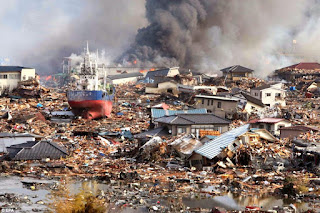Disaster Management Prevent
 |
| Disaster Management |
Disaster management aims to cut back,
or avoid, the potential losses from hazards, assure prompt and acceptable help
to victims of disaster, and bring home the bacon speedy and effective recovery.
The Disaster management cycle illustrates the continuing method by that
governments, businesses, and civil society arrange for and scale back the
impact of disasters, react throughout and like a shot following a disaster, and
take steps to recover once a disaster has occurred. acceptable actions in the
slightest degree points within the cycle result in larger state, higher
warnings, reduced vulnerability or the interference of disasters throughout
succeeding iteration of the cycle. the entire disaster management cycle
includes the shaping of public policies and plans that either amend the causes
of disasters or mitigate their effects on individuals, property, and
infrastructure.
The mitigation and state phases occur
as disaster management enhancements square measure created in anticipation of a
disaster event. organic process concerns play a key role in contributive to the
mitigation and preparation of a public to effectively challenge a disaster. As
a disaster happens, disaster management actors, particularly humanitarian
organizations, get involved within the immediate response and long recovery
phases. The four disaster management phases illustrated here don't invariably,
or maybe usually, occur in isolation or during this precise order. typically
sections of the cycle overlap and also the length of every phase greatly
depends on the severity of the disaster.
Mitigation - Minimizing the
consequences of disaster.
Examples: building codes and zoning;
vulnerability analyses; public education.
Preparedness - coming up with a way
to respond.
Examples: state plans; emergency
exercises/training; warning systems.
Response - Efforts to reduce the
hazards created by a disaster.
Examples: search and rescue;
emergency relief .
Recovery - Returning the community to
traditional.
Examples: temporary housing; grants;
treatment.
Sustainable Development
Developmental concerns contribute to
any or all aspects of the disaster management cycle. one among the most goals
of disaster management, and one among its strongest links with development, is
that the promotion of property livelihoods and their protection and recovery throughout
disasters and emergencies. wherever this goal is achieved, individuals have a
larger capability to affect disasters and their recovery is a lot of speedy and
long lasting. during a development homeward disaster management approach, the
objectives square measure to cut back hazards, forestall disasters, and
indurate emergencies. Therefore, organic process concerns square measure
powerfully pictured within the mitigation and state phases of the disaster
management cycle. Inappropriate development processes will result in
exaggerated vulnerability to disasters and loss of state for emergency things.
Mitigation
Mitigation activities really
eliminate or scale back the likelihood of disaster prevalence, or scale back
the consequences of ineluctable disasters. Mitigation measures embody building
codes; vulnerability analyses updates; partition and land use management;
building use laws and safety codes; preventive health care; and public
education.
Mitigation can rely upon the
incorporation of acceptable measures in national and regional development
coming up with. Its effectiveness will rely upon the provision of data on
hazards, emergency risks, and also the countermeasures to be taken. The
mitigation section, and so the entire disaster management cycle, includes the
shaping of public policies and plans that either amend the causes of disasters
or mitigate their effects on individuals, property, and infrastructure.
Preparedness
The goal of emergency state programs
is to realize a satisfactory level of readiness to reply to any emergency state
of affairs through programs that strengthen the technical and social control
capability of governments, organizations, and communities. These measures will
be delineate as provision readiness to affect disasters and may be increased by
having response mechanisms and procedures, rehearsals, developing long and
short-run ways, public education and building early warning systems. state may
also take the shape of guaranteeing that strategic reserves of food, equipment,
water, medicines and different necessities square measure maintained in cases
of national or native catastrophes.
During the state section,
governments, organizations, and people develop plans to avoid wasting lives,
minimize disaster injury, and enhance disaster response operations. state
measures embody state plans; emergency exercises/training; warning systems;
emergency communications systems

